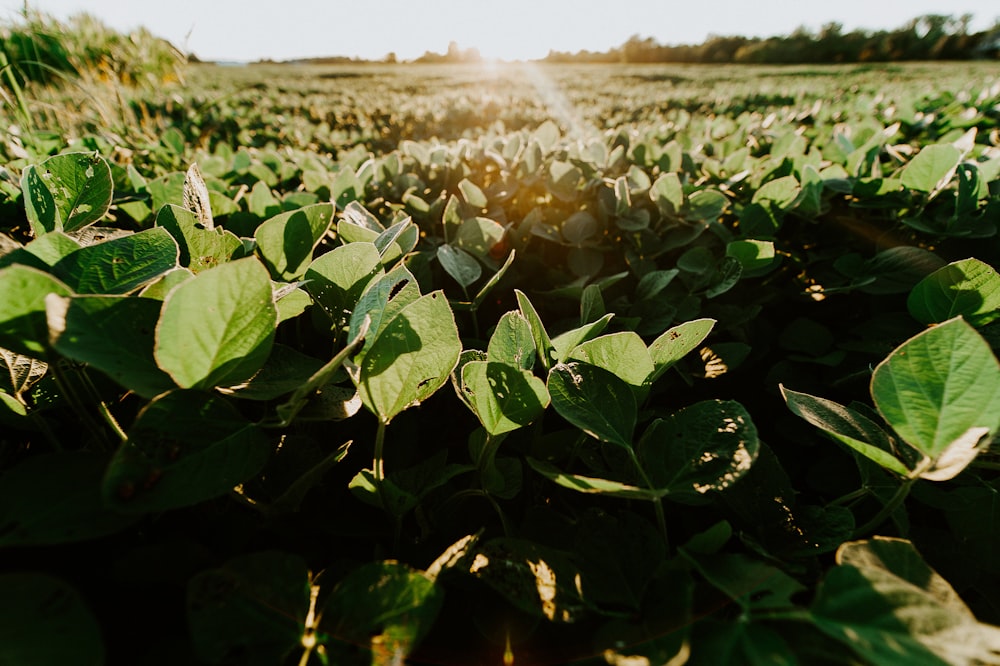This Year’s Consumer Electronics Show Proves That Even Farming Can Give Us High Tech Profits
Last month’s virtual Consumer Electronics Show (CES) featured all sorts of cutting-edge gadgets, but this year’s award for consumer high-tech innovation ended up going to a company that makes tractors.
It’s no joke. Looking at what they’ve brought to the table, it couldn’t be clearer that they deserve it. What they’ve created perfectly symbolizes the marriage of hardware, robotics, and software in the digital age.
More than that, it’s proof that the modern high-tech sector can transform and revolutionize any aspect of today’s economy, even something like agriculture, that’s almost literally “as old as dirt.”
After all, a field known as “precision agriculture” is making modern farming a very sophisticated and tech-driven enterprise.
This is a company pushing the boundaries of a sector worth $6 billion and growing at 15% a year.
Even better, it’s beating the broad market by more than 140%.
Image Source: Unsplash
Today, I’m going to show you why our ag-tech leader will continue to rack up big gains…
Smart Farming
Now then, the first use of the term precision agriculture occurred at the University of Minnesota back in 1985 in regard to using technology to vary input in crop fields.
But by today’s standards, it could charitably be described as “rudimentary.”
Today, the field includes using satellites to track and guide the tilling, fertilizing, and harvesting tractors, as just one example.
This lets farmers optimize the path of their tractors, saving time and fuel. It also allows the machines to adapt to changing topsoil depth and pressure, cutting down a process from 20 minutes to just six seconds.
Afterwards, when it’s time to plant seeds, precision ag allows farmers to run their machines at speeds up to 10 mph.
That’s much faster than manual, uncoordinated planting. It also means more seeds get planted in that perfect window that will massively improve yield.
When it comes to spraying fertilizer and pesticides, or when it’s time to harvest, precision ag means machines can use satellite guidance and coordinate with each other to optimize their paths.
Precision ag also includes wirelessly sending commands to planting machines. That’s key when it comes to finding the optimum time to plant crops that can determine the yield of a whole year’s harvest.
Similarly, precision ag can use satellite guidance and advanced sensors to make sure fertilizer and pesticides are accurately dispersed exactly where they’re needed,
Then there’s harvest time. This advanced tech platform allows the combines too can optimize their path. Using their cameras and other sensors, the machines can also adjust their harvesting settings based on the height and other features of the crops, making sure the yield is maximized.
This data can even be saved by location. In this way, farmers can track moisture levels and crop health in each part of a field, spotting problems early or testing out new farming methods.
The ag-tech leader at the forefront of all these innovations in precision ag is none other than Deere & Co. (DE).
An Old Deer with New Tricks
Now look, as someone who has knocked around Silicon Valley for more than 30 years, I understand why many think of Deere as old school.
After all, this is the world-famous tractor firm that got its start way back in 1837 when founder John Deere developed a rudimentary plow from a broken saw blade.
Today, the global leader makes all manner of heavy equipment used in agriculture, construction, landscaping, and the military.
But tractors are much more than they used to be. Over the past 20 years, Deere has become a cutting-edge tech leader and built out truly autonomous tractors.
We ‘re not just talking about GPS-based steering.
Deere’s Machine Sync system lets farmers network their combines and tractors, synchronizing and coordinating their movements for maximum efficiency.
Meanwhile, Deere’s Blue River subsidiary uses AI on tractors to identify weeds and pests in the field, and spray an appropriate amount of pesticide.
This AI, along with a suite of sensors and Internet of Things connectivity, packaged in Deere’s latest X Series combines is what handed the company the 2021 CES Robotics prize.
Not only can this machine harvest 70% more wheat per hour than its predecessors, but advanced sensors allow the farmer to monitor the quality of the harvested grain in real-time, down to the kernel.
Even better, self-driving features ensure both farmer and crops will be safe while the farmer inspects the harvest.
Seeing Green
The investment in tech is really paying off for Deere and its shareholders. Since the market rebounded last March 23, the S&P 500 is up a historic 73.8%.
But Deere just absolutely crushed it, rising 177.4% – beating the benchmark by a stunning 140%.
Don’t worry, I still see plenty of upside ahead. The firm is expected to increase earnings by 52% this year.
If we cut that in half to be conservative, we’d still see a double in less than three years…
As you can see, robotics, AI, and the Internet of Things are already making inroads far beyond what gets covered by TV shows or newspapers.
And sometimes the innovators and market leaders aren’t where you’d expect them to be.
For even more proof of this, you don’t even have to look away from agriculture. There’s even a whole brand-new sector within farming that’s spreading across the country and turning into a trillion-dollar industry.
I’m talking about the cannabis industry. It’s growing fast, and going to be growing even faster as it’s legalized in more and more of the country.
Disclosure: None.




